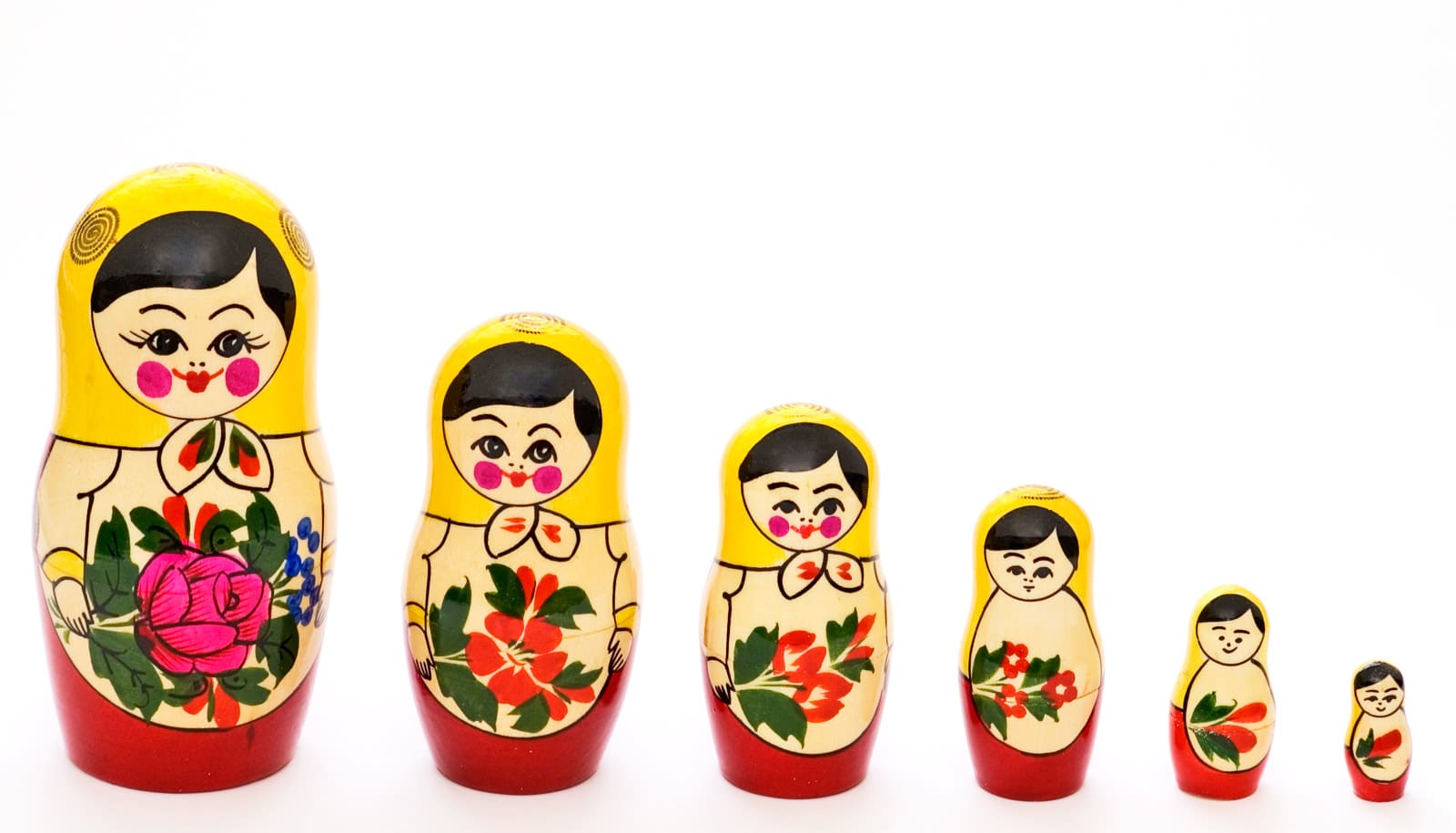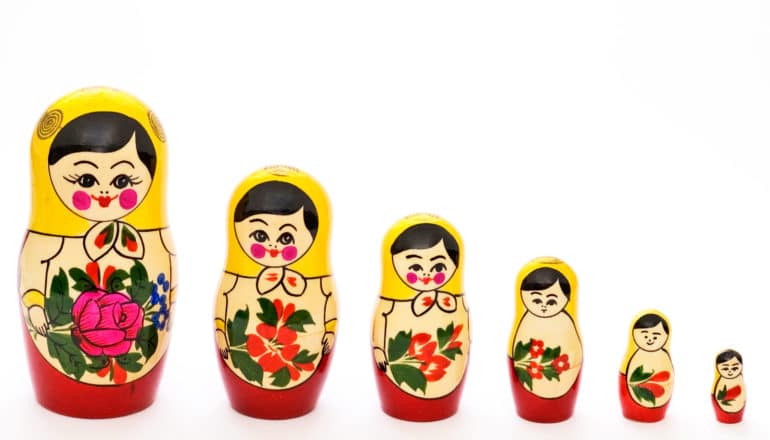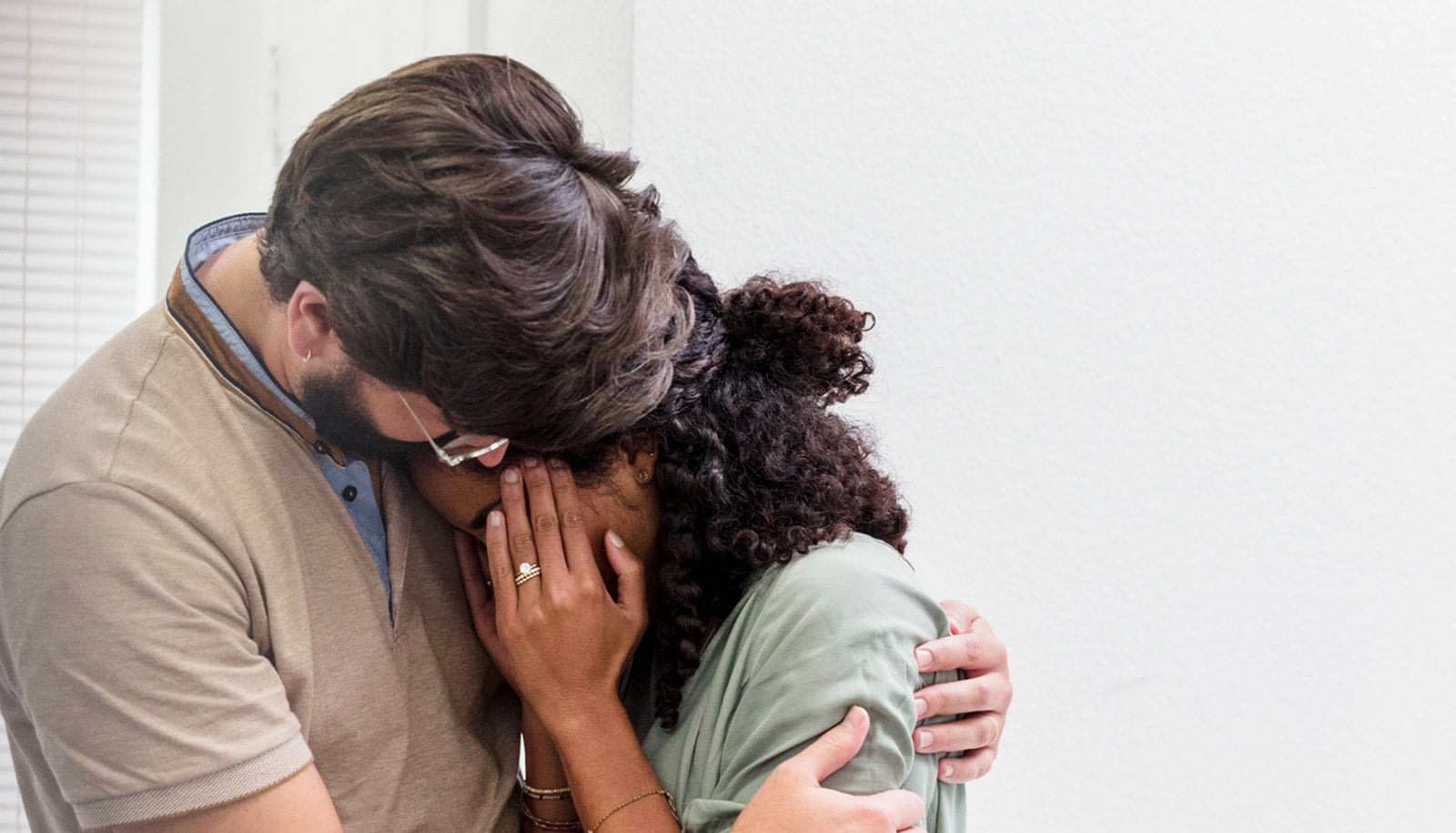
Unlike the nuclear DNA that offspring inherit from both parents, mitochondrial DNA comes only from the mother. (Credit: Getty Images )
Kids of older moms inherit more mitochondrial mutations
One in eight women in the general population is a carrier of mitochondrial disease. New findings could inform genetic counseling for those who plan to have children.

New research clarifies how one generation transmits mitochondrial DNA, and potentially mitochondrial disease, to the next.
The study finds that children born to older mothers carry more mitochondrial mutations than do children born to younger mothers, which could have important implications for the inheritance of disease-related mutations.
Mitochondria are cellular subunits that produce energy, and mitochondrial diseases are among the most common genetic disorders. They occur in 1 in 5,000 people and can cause a wide range of health problems, ranging from fatigue to developmental disabilities to seizures to compromised heart function and poor vision.
One in eight women in the general population is a carrier of mitochondrial disease. These women carry copies of their mitochondrial DNA that contain disease-causing mutations that can be transmitted to their offspring, but do not suffer from the disease themselves. Predicting the chances that female carriers will transmit disease-causing mitochondrial DNA to their children has been challenging.
Mitochondrial DNA is separate from the rest of the cell’s DNA, which is located in the nucleus. Unlike the nuclear DNA that offspring inherit from both parents, mitochondrial DNA comes only from the mother. Each mitochondrion carries two to ten copies of the mitochondrial DNA, which may vary slightly due to mutations—replacements, insertions, or deletions of DNA letters—which in some cases lead to mitochondrial disease.
Whether or not a mutation results in a mitochondrial disease, and the severity of the disease, often depends on the proportion of an individual’s mitochondrial DNA that carries the mutation.
The ‘bottleneck’
“Some tissues with high energetic demands—such as muscle and brain—have hundreds to thousands of mitochondria and thus thousands of mitochondrial DNA copies,” says Kateryna Makova, professor of biology at Penn State and the co-corresponding author of the study in PNAS.
“Mitochondrial DNA is inherited from the mother, but only a small number of these copies actually get passed on in each egg. That means that at some point, there is a reduction in the number of mitochondrial DNA between generations, causing what biologists call a bottleneck, which can reduce the amount of genetic diversity passed on from mother to child.
“Understanding this bottleneck, when it happens, and how many mitochondrial DNA get through, could improve our understanding of how disease-related mutations get passed on.”
The research team found that there is a drastic bottleneck of mitochondrial DNA that takes place during oogenesis, the process that creates egg cells, reducing thousands of copies of mitochondrial DNA down to only about seven to ten. Like shaking colored beads out of a bottle with a narrow neck, where the few beads that get through might not reflect the overall composition of the bottle, the mitochondrial DNA that gets passed on to the offspring may not have the proportion of disease-related mutations present in the mother.
“The size of the bottleneck affects the probability that a child inherits a disease-causing mutation from her or his mother,” says Peter Wilton, a postdoctoral researcher at the University of California, Berkeley and a co-first author of the study.
“We found that, because of the narrow bottleneck, mutations in maternal mitochondrial DNA that were not very frequent were often lost within one generation—they were not present in the children. But those that were present at a higher proportion in the mother were more likely to get passed on, and in some cases may persist for up to five to ten generations.”
Oogenesis, the creation of eggs
For the study, the research team collaborated with coauthor Ian Paul, a pediatrician at the Penn State Milton S. Hershey Medical Center, who oversaw sample collection from 345 individuals in 96 multi-generational families. Families included at least two siblings, their mother, and in some cases the mother’s mother and additional generations.
Because the team studied mothers and multiple children in each family, they were able to infer when during oogenesis this bottleneck occurs. If the bottleneck occurs before cells split into separate lineages that will eventually become the eggs that make each child, then siblings should have a similar composition of mitochondrial DNA—the same seven to ten copies of mitochondrial DNA that made it through the bottleneck.
If the bottleneck instead occurs after these lineages have separated—with each lineage independently reducing the amount of DNA during the bottleneck—then siblings should have very different compositions of mitochondrial DNA, which is what the researchers found.
Genetic counseling for mitochondrial disease
“Knowing the size and timing of the bottleneck has important implications for genetic counseling,” says Makova. “Because the bottleneck occurs separately in each child’s cell lineage, a mother that is a carrier for a mitochondrial disease could pass on a disease-related mutation to one child but not the other. Now that we know when the bottleneck occurs, we hope to investigate oogenesis at a molecular level in animal models to get a better understanding of the process.”
The study also suggests that egg precursor cells with high proportions of disease-causing mutations might not make it to the next generation because of the evolutionary process called natural selection.
“Selection against disease-causing mutations likely occurs during oogenesis, and might be facilitated by the bottleneck,” says Arslan Zaidi, postdoctoral researcher at Penn State at the time of the study and the co-first author.
Importantly, children born to mothers that gave birth later in life had more mutation-carrying copies of their mitochondrial DNA as compared to younger mothers.
“All of the eggs are essentially fully developed when a girl is born, so they sit dormant for a long time,” says Zaidi. “Our results tell us that something is happening within these dormant eggs, for example their mitochondrial DNA might be dividing, which provides an opportunity to acquire mutations. Age may also play a role in the probability that a child might inherit a disease-causing mutation.”
Funding for the work came from the National Institutes of Health. Additional funding came from the Office of Science Engagement, the Eberly College of Science, the Huck Institute of the Life Sciences and the Institute for CyberScience at Penn State, as well as, in part, grants from the Pennsylvania Department of Health using Tobacco Settlement and CURE Funds.
Source: Penn State
The post Kids of older moms inherit more mitochondrial mutations appeared first on Futurity.
Share this article:
This article uses material from the Futurity article, and is licenced under a CC BY-SA 4.0 International License. Images, videos and audio are available under their respective licenses.


